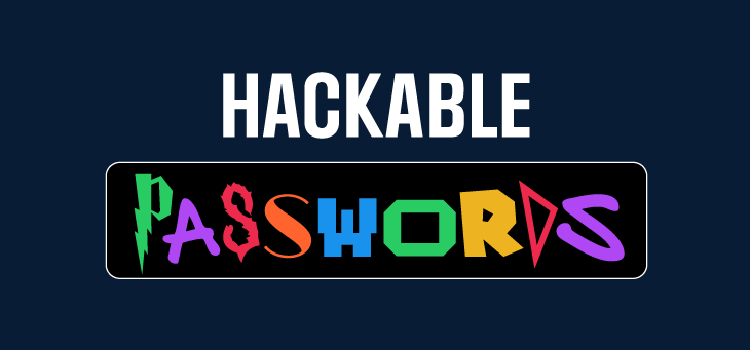Mission Statement
The Information Security Office is committed to lowering the risk profile of the University’s electronic information by implementing industry best practices to protect the confidentiality, integrity, and availability of student, faculty, and staff information. We uphold the University’s compliance obligations by developing information security policies, providing security awareness training, and overseeing the implementation of strategic information security initiatives.
Scam of the Week
You're “Hired”…to Be Scammed
In this week’s scam, you receive an email about an exciting job opportunity from a well-known organization, like Disney, Louis Vuitton, or Ford. The email looks professional and seems to be from a legitimate recruiter. It includes a link to book a meeting on Calendly, a popular scheduling tool.
But if you select the link, you’ll be taken to a fake Calendly webpage that cybercriminals control. The site prompts you to log in using your Google or Facebook account, but if you enter your login information, you won’t get an interview. Instead, you’ll hand your login information directly to cybercriminals, who can then use it to hack into your personal or work accounts!
Follow these tips to avoid falling victim to this phishing scam:
- Be suspicious if you receive an unexpected invitation for a job opportunity, especially if you never applied for it. Visit an organization's official careers page if you’re curious about employment opportunities.
- Remember that scammers can use this trick with any meeting app, not just Calendly. Be just as cautious if you receive similar links involving other popular tools, such as Zoom or Microsoft Teams.
- Be very suspicious of any website that asks you to log in with your Google or Facebook account to make an appointment. Always stop and think before you take action!
Time It Takes a Hacker to Brute Force Your Password in 2023
| Number of Characters | Number Only | Lowercase Letters | Upper and Lower Case Letters | Numbers, Upper and Lowercase Letters | Numbers, Upper and Lowercase Letters, Symbols |
|---|---|---|---|---|---|
| 4 | Instantly | Instantly | Instantly | Instantly | Instantly |
| 5 | Instantly | Instantly | Instantly | Instantly | Instantly |
| 6 | Instantly | Instantly | Instantly | Instantly | Instantly |
| 7 | Instantly | Instantly | Instantly | Instantly | Instantly |
| 8 | Instantly | Instantly | Instantly | Instantly | 1 sec |
| 9 | Instantly | Instantly | 4 secs | 21 secs | 1 min |
| 10 | Instantly | Instantly | 4 mins | 22 mins | 1 hour |
| 11 | Instantly | 6 secs | 3 hours | 22 hours | 4 days |
| 12 | Instantly | 2 mins | 7 days | 2 months | 8 months |
| 13 | Instantly | 1 hour | 12 months | 10 years | 47 years |
| 14 | Instantly | 1 day | 52 years | 608 years | 3k years |
| 15 | 2 secs | 4 weeks | 2k years | 37k years | 232k years |
| 16 | 15 secs | 2 years | 140k years | 2m years | 16m years |
| 17 | 3 mins | 56 years | 7m years | 144m years | 1bn years |
| 18 | 26 mins | 1k years | 378m years | 8bn years | 79bn years |
 QR Code Phishing - 'Quishing'
QR Code Phishing - 'Quishing'
 Phishing Click Rates Triple in 2024
Phishing Click Rates Triple in 2024
 The Most Dangerous Pop Culture Passwords in 2024
The Most Dangerous Pop Culture Passwords in 2024
Cyber Security Alerts
What is being exploited?
Vulnerability in Windows CryptoAPI that allows malicious executables using a spoofed
code-signing certificate to appear as if it was from a trusted source.
What does this affect?
Attackers can conduct man-in-the-middle attacks and decrypt confidential information
on user connections to spoofed software that appears legitimate.
Which Operating Systems does this affect?
Windows 10, Windows Server 2016, and Windows Server 2019
How to mitigate this?
Apply critical patches to affected systems as soon as possible.
For more information:
CVE-2020-0601
What is being exploited?
Vulnerability in Windows Remote Desktop Gateway (RD Gateway) that allows specially
crafted requests to execute arbitrary code on the target system.
What does this affect?
Attackers can gain access to the target system with full user rights that would allow
them to install programs; view, change, or delete data; or create new users.
Which Operating Systems does this affect?
Windows Server 2012, Windows Server 2016, and Windows Server 2019
How to mitigate this?
Apply critical patches to affected systems as soon as possible.
For more information:
CVE-2020-0609 & CVE-2020-0610
What is being exploited?
Vulnerability in Windows Remote Desktop Client that allows the server to execute arbitrary
code on the target system after an unsuspecting user connects to it.
What does this affect?
Attackers can trick the user into connecting to a compromised server and gain access
to the target system with full user rights that would allow them to install programs;
view, change, or delete data; or create new users.
Which Operating Systems does this affect?
Windows 7, Windows 8, Windows 10, Windows RT, Windows Server 2008, Windows Server
2012, Windows Server 2016, and Windows Server 2019
How to mitigate this?
Apply critical patches to affected systems as soon as possible.
For more information:
CVE-2020-0611
Windows 10 & Windows Server 2016 and newer
1. Search: Check for Updates
2. Click “Check for Updates” then install all updates
Windows 8 and older & Windows Server 2012 and older
1. Navigate: Control Panel > System and Security > Windows Update
2. Click “Check for Updates” then install all updates



